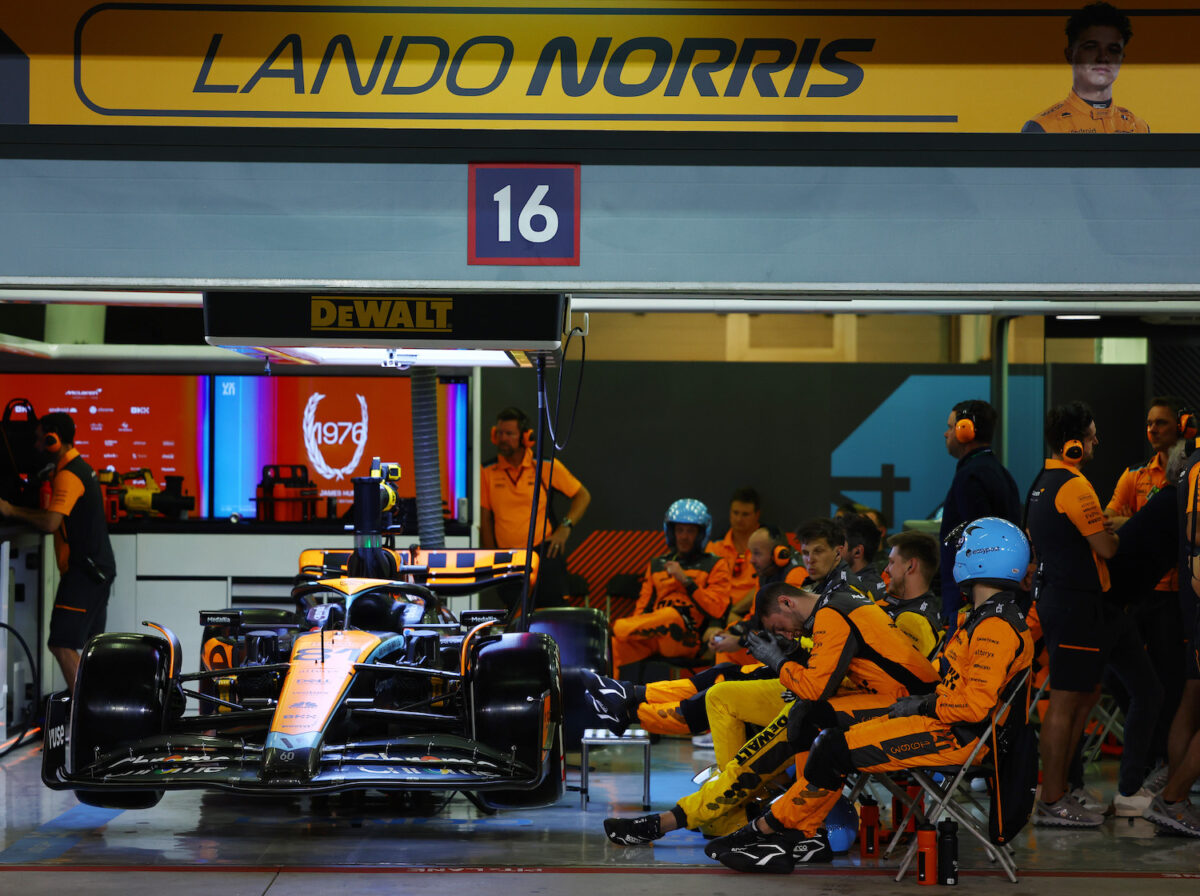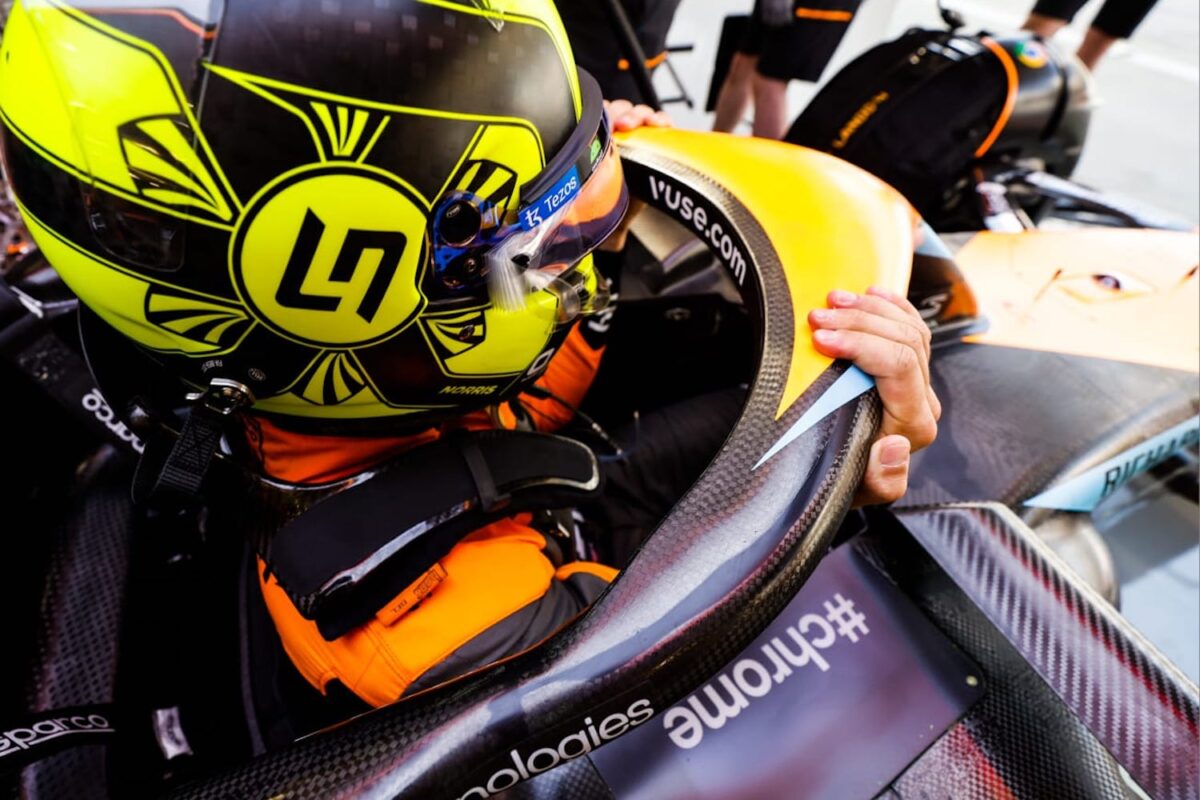McLaren’s plan to run ‘dynamic sponsor panels’ on their 2023 Formula 1 car might sound very innovative, but it also points to the concerning financial situation the once World Championship-winning team still finds itself in.
Race cars have long been glorified billboards but McLaren has gone one step further, teaming up with tech company Seamless Digital to introduce dynamic advertising panels on their MCL60 Formula 1 car this season.
The panels, which sit to the left and right of the cockpit and are clearly visible from onboard cameras, can cycle through different sponsors or messages, allowing McLaren to change the branding on the car on the fly – a first for Formula 1.
McLaren previously tested the technology on their 2022 car last year during FP1 at the United States Grand Prix, but they’ve just been given the go-ahead to use them on their 2023 car throughout the season. We saw them in use at the Bahrain Grand Prix last weekend, actually, showing different messages for team sponsor Google.
Watch McLaren’s dynamic sponsor panels in action below.
It’s a canny innovation that opens up all sorts of possibilities. McLaren could configure the panels to display different messages or branding on different parts of the track, say as they drive past different grandstands, or they could display advertising in different languages.
It would also save them a lot of time having to rebrand cars for different markets. For example, the e-cigarette brand Vuse is one of McLaren’s major sponsors, but in countries where tobacco advertising is banned (e.g. Australia), McLaren has to swap out Vuse for other sponsors. With dynamic panels, they could just flip a switch rather than rewrapping the car, saving precious time and resources.
RELATED: As Red Bull Signs Deal With Ford, McLaren Looks To Get Back Together With Honda In Formula 1
Seamless Digital has also come up with a similar system that can be fitted to helmets, which might be the next thing McLaren experiments with. At the moment, these dynamic panels are very small, but it’s not inconceivable that in a few years’ time, McLaren’s entire car could be running these panels.
But let’s pause for a second. These dynamic sponsor panels are a cool idea, but why is McLaren even experimenting with them in the first place?
Is McLaren selling its soul?
The answer’s pretty simple: McLaren is desperate for cash. The British team has been in financial dire straits for a few years now, with McLaren making the unprecedented move back in 2021 of selling their iconic Woking headquarters to an investment firm and leasing it back from them in order to free up funds.

After last year’s driver market debacle, which saw McLaren give Daniel Ricciardo the boot early in favour of Oscar Piastri, McLaren will be in extra need of dosh, as they had to pay out Ricciardo a few million for the privilege. It doesn’t help that McLaren’s 2023 car already looks even less competitive than the hard-to-drive MCL36 of 2022…
RELATED: Oscar Piastri’s First Day At The Office With McLaren Gets Off To A Rocky Start
The real question is whether or not these dynamic branding panels will affect the performance of McLaren’s cars. 2023’s F1 cars have a minimum weight requirement of 798kgs, and every team on the grid has struggled to get down to that weight. We’ve already seen how some teams like Ferrari, Williams and indeed McLaren have pared back their liveries and exposed more carbon fibre in order to save precious grams.
If any team managed to get below the minimum weight, they could theoretically add ballast somewhere along the floor of their cars, where it could improve the balance of the car or aid aerodynamics. However, these dynamic panels – which reportedly weigh around 200gms each, quite a lot in the F1 world – are high up on the car relative to its centre of gravity.
There’s an argument to be made, then, that McLaren is trading off a slight reduction in performance for some extra advertiser money… But then, they’re already operating at the cost cap, so it’s not clear where those extra advertiser dollars would end up going. Fattening Zak Brown’s pockets, maybe?

These panels also have broader implications for the sport. Modern F1 cars are already pretty visually chaotic – if an entire car was swathed in dynamic panels, it could make them incredibly distracting and hard to watch.
On a more emotional level: the 2023 McLaren has already lost a lot of its identity, having to pare back its distinct papaya paint job for big patches of exposed carbon fibre and plenty of static sponsors. Fans get attached to how F1 cars look – would the same be true for a fully dynamic liveried car?
Hopefully, these dynamic panels are used sparingly, and the extra cash helps McLaren get more competitive. Otherwise, we’re not entirely sure if it’s totally good news.
